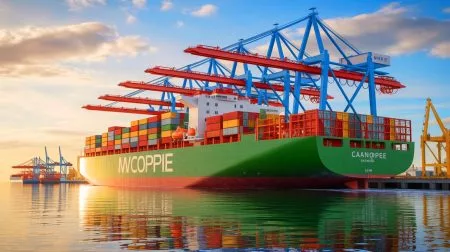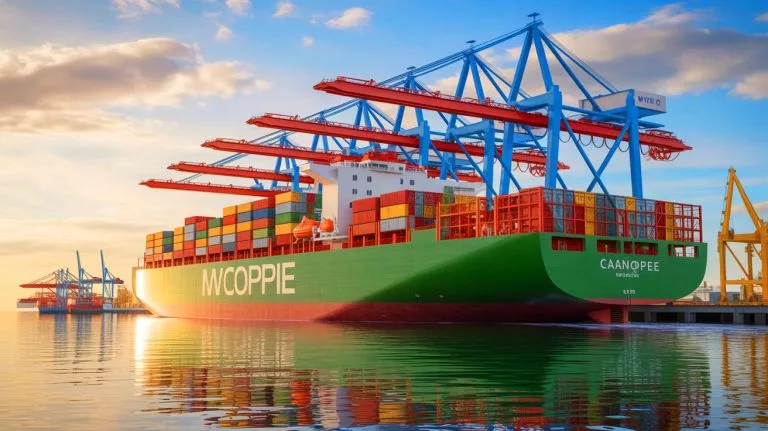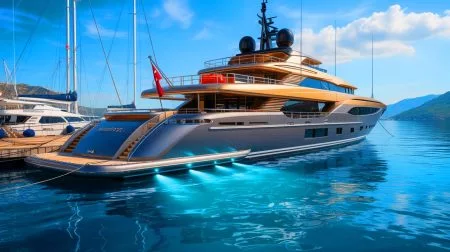| IN A NUTSHELL |
|
The MV Canopee, the world’s first hybrid propulsion commercial cargo ship, recently made a historic port call in the United States. Arriving at Florida’s Port Canaveral on September 2, 2024, this groundbreaking vessel is equipped with four advanced wing sails. Its mission was to deliver critical components for the European Space Agency, specifically the European Service Module (ESM-3) destined for NASA’s Artemis-III lunar mission in 2026. This arrival marks a significant step forward in maritime technology and space exploration collaboration between Europe and the United States.
The Innovative Design of MV Canopee
The MV Canopee is a remarkable feat of engineering, showcasing a blend of traditional maritime craft and cutting-edge technology. Constructed by Neptune Shipyard in Poland, the vessel underwent its first sea trials in December 2022. Its most notable feature is the set of four wing sails developed by AYRO, each approximately 120 feet tall with a surface area of 363 square meters. These sails are designed to rotate 360 degrees and are collapsible, offering a flexible and efficient means of propulsion.
The hybrid nature of the Canopee allows for significant fuel savings, achieving up to a 30% reduction in fuel consumption. This is a crucial development in an era where sustainability is increasingly prioritized. The sails are equipped with two flaps, facilitating precise control over the angle of incidence and enhancing the vessel’s adaptability to wind conditions. Such innovations not only contribute to environmental conservation but also set a precedent for future maritime designs.
Mission and Cargo: A Journey from Europe to the U.S.
The Canopee’s voyage from France to Port Canaveral was part of a broader mission to support international space exploration efforts. The ship departed from Bremen, Germany, on August 22, 2024, carrying the European Service Module (ESM-3). This crucial component will be integral to NASA’s Artemis-III mission, which aims to return humans to the moon by 2026. Upon arrival in Florida, the cargo was unloaded by Ambassador Service International for transport to the Kennedy Space Center.
The port call at Canaveral was not only a logistical milestone but also a symbolic gesture of transatlantic cooperation in the pursuit of space exploration. Captain John Murray, CEO of Port Canaveral, expressed enthusiasm about supporting such a historic journey. The presence of the Canopee underscores the importance of international partnerships in advancing technological and exploratory frontiers.
Technical Specifications and Operational Role
The MV Canopee is a 400-foot-long vessel with a deadweight tonnage (DWT) of 5,500 tons, registered in France and operated by Alizes. Designed by the Ariane Group, its primary role is the transportation of Ariane 6 Rocket Components from European ports to the European Space Agency’s launch site in French Guiana. This operational capacity positions the Canopee as a critical link in the supply chain for space missions.
Beyond its immediate mission, the Canopee serves as a prototype for future hybrid sailing cargo vessels. Its successful deployment illustrates the viability of wind-assisted propulsion on a commercial scale. This could herald a new era of maritime transport, where efficiency and sustainability are paramount. The Canopee’s design and operational success may inspire similar innovations across the shipping industry.
Implications for the Future of Maritime Transport
The arrival of the MV Canopee in the United States signals a transformative moment in maritime technology. By integrating hybrid propulsion systems into commercial shipping, the industry can significantly reduce its carbon footprint, aligning with global sustainability goals. The Canopee represents a shift towards more environmentally responsible maritime practices, which is essential as the world faces increasing environmental challenges.
Moreover, the vessel’s role in supporting space exploration highlights the interconnectedness of technological advancements across industries. As countries collaborate to explore new frontiers, the Canopee stands as a testament to the potential of innovative design and international cooperation. The lessons learned from its operation could inform future projects, driving progress not only in maritime transport but also in aerospace endeavors.
The MV Canopee’s journey to Port Canaveral is a landmark event in both maritime and space exploration history. As the first large-scale hybrid sailing cargo vessel, it sets a new standard for efficiency and sustainability. The collaboration between NASA and the European Space Agency further underscores the importance of international partnerships. As we look to the future, how will hybrid propulsion technologies reshape the shipping industry, and what new possibilities might they unlock for global exploration?
Did you like it? 4.6/5 (28)








This is amazing! 🌍 How soon can we expect more ships like the MV Canopee in commercial use?
Wow, a ship with wing sails? Sounds like something out of a sci-fi movie! 🚀